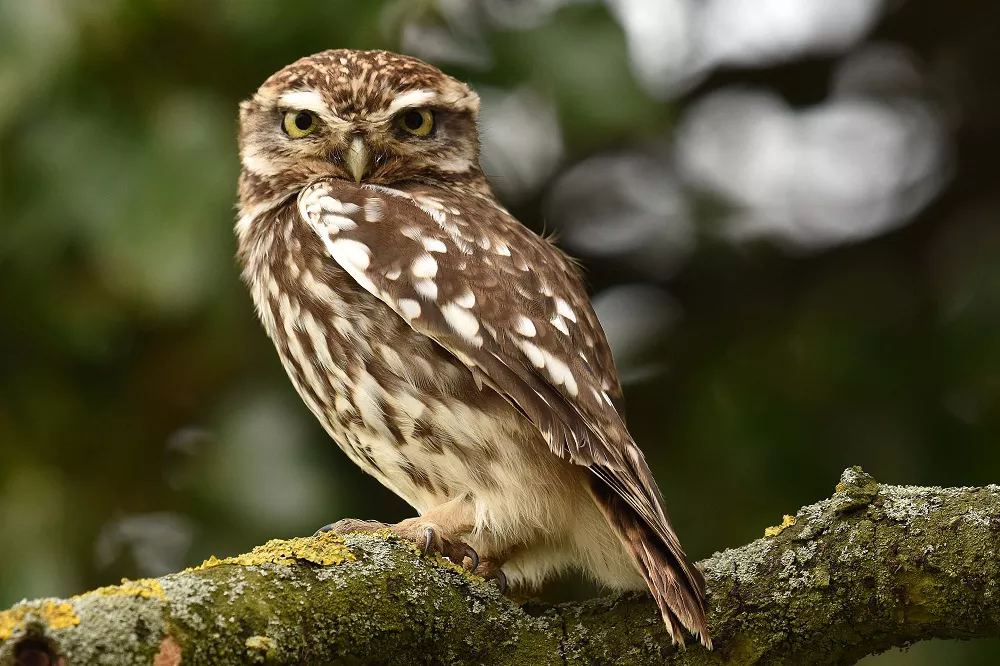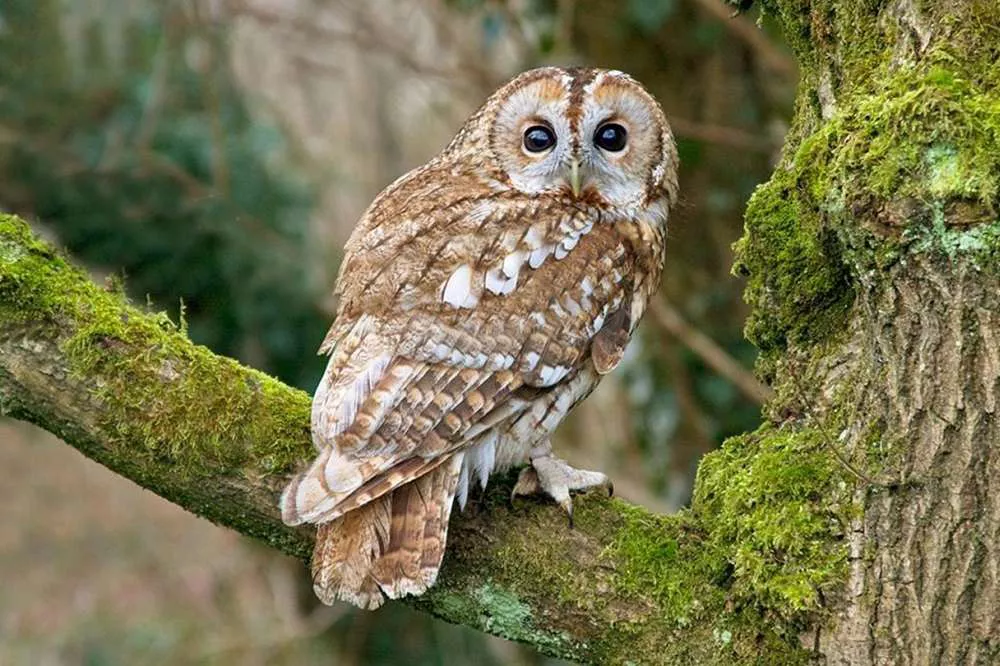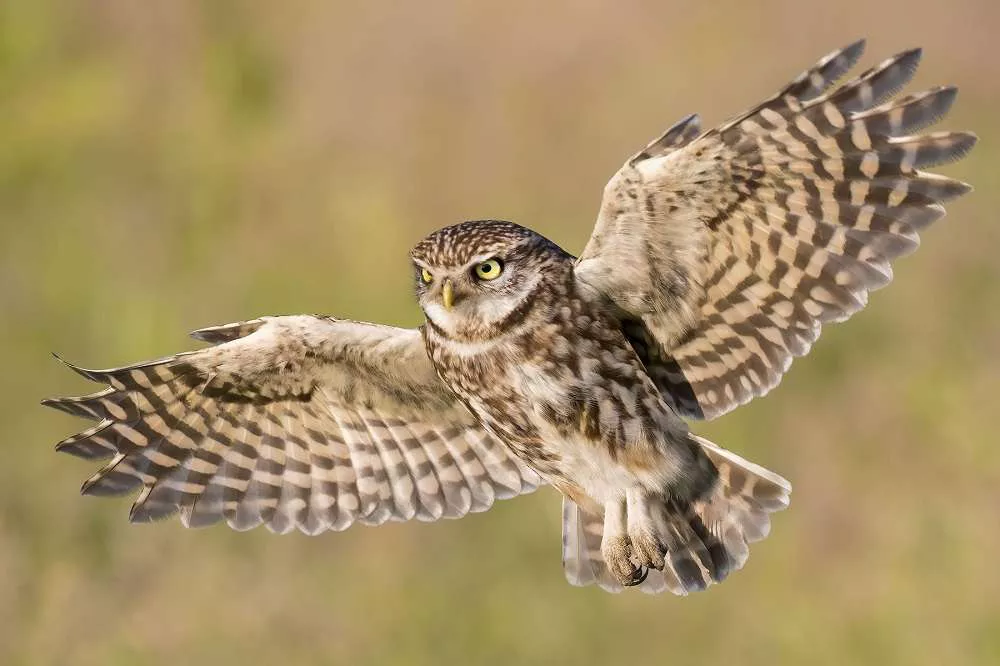When you think of Greece, you may picture ancient ruins, sunny islands, and blue seas. But did you know that Greece also has a national bird? It’s the Little Owl (Athene noctua). This small, charming bird has deep roots in Greek history, mythology, and culture. Even today, it continues to represent knowledge, freedom, and the spirit of the Greek people.
In this article, we will explore everything about the Little Owl – from its appearance and behavior to its connection with ancient Greece.
What Is the Little Owl?
The Little Owl, known by its scientific name Athene noctua, is a small bird of prey. It belongs to the owl family. It is called “Little” because it is quite small compared to other owls. On average, it is about 20–25 cm (8–10 inches) long and weighs only 150–200 grams (5–7 ounces).
Its eyes are bright yellow and very sharp. Its head is round, and it has white “eyebrows” that give it an expressive look. Its feathers are brown with white spots, which help it blend into its surroundings.
| Feature | Details |
| Scientific Name | Athene Noctua |
| Common Name | Little Owl |
| Size | Length: 21–23 cm (8.3–9.1 in); Wingspan: 54–58 cm (21–23 in) |
| Weight | 140–250 grams (4.9–8.8 oz) |
| Plumage | Brown with white spots on upperparts; pale underparts with darker streaks |
| Eyes | Large, yellow, and forward-facing |
| Facial Disc | Inconspicuous, flat-faced with white “eyebrows” giving a stern expression |
| Habitat | Open countryside, farmland, orchards, and ruins |
| Diet | Insects, small mammals, birds, earthworms, and reptiles |
| Hunting Style | Mostly nocturnal and crepuscular; hunts from low perches |
| Call | Repetitive “kiew” or “kee-ik” calls; also a cat-like “mew” |
| Nesting | In cavities—trees, buildings, or nest boxes |
| Breeding Season | March to August |
| Clutch Size | 3–5 eggs |
| Incubation | About 28–29 days, by the female only |
| Conservation Status | Least Concern (IUCN), but declining in parts of Western Europe |
| Lifespan | Up to 15 years in the wild |
Where Does the Little Owl Live?
The Little Owl is found in many parts of Europe, Asia, and North Africa. In Greece, it is commonly seen in rural areas, olive groves, and near old buildings or ruins. It prefers open landscapes where it can perch and look for food.
These owls are often spotted on fences, trees, rocks, and rooftops. Because they are not shy, people in villages and farms can often see them during the day.
What Does the Little Owl Eat?
Little Owls are carnivorous, which means they eat meat. Their diet includes:
- Insects like beetles, grasshoppers, and moths
- Small mammals like mice and voles
- Small birds and reptiles
- Earthworms and other invertebrates
They are patient hunters. They sit quietly on a perch and wait for movement. Then, they swoop down to catch their prey with sharp claws.
Little Owls also store food in their nests. This helps them survive when food is hard to find.
Behavior and Lifestyle
Little Owls are territorial birds. They stay in one area and protect it from other owls. They use their loud calls to mark their territory. Their call sounds like a “kiew, kiew” or sometimes a repeated “cu-cu-cu.”
They are also monogamous, which means they have one partner for life. Pairs work together to raise their chicks. They nest in tree holes, rock crevices, or even in walls and old buildings.
Each year, the female lays 3–5 eggs. Both parents take care of the chicks until they can fly and hunt on their own.
The Little Owl in Greek Mythology
The Little Owl is not just a bird. In ancient Greece, it was a symbol of wisdom and sacred to the goddess Athena. Athena was the goddess of wisdom, war, and strategy. She was one of the most important gods in the Greek pantheon.
The city of Athens, which is named after Athena, used the owl as a symbol on coins and pottery. These images date back more than 2,500 years.
The owl was seen as a protector of the city. People believed that seeing an owl before battle was a sign of victory.
Even today, the connection between Athena and the owl is strong. The scientific name of the Little Owl, Athene noctua, reflects this link.
Why Is the Little Owl the National Bird of Greece?
Greece officially recognizes the Little Owl as its national bird because of its historical and cultural significance. Here are a few reasons:
1. Cultural Heritage: The Little Owl is deeply connected with ancient Greek culture and mythology.
2. Symbol of Wisdom: As the companion of Athena, the owl represents intelligence, clarity, and knowledge.
3. Historical Presence: It appears in ancient Greek art, coins, and literature.
4. Widespread in Greece: The Little Owl is still common in the Greek countryside today.
5. Eco-Friendly Symbol: It represents harmony between humans and nature.
This small bird reflects the values and identity of the Greek people – proud, wise, and connected to their land and history.
Conservation Status
Fortunately, the little owl is not currently facing major threats and is listed as a species of least concern internationally. However, like many birds, it faces challenges from habitat loss and changes in farming practices. Protecting old buildings, stone walls, and natural habitats helps the little owl survive and continue its long tradition as a companion to humans.
Where to See the Little Owl in Greece
If you visit Greece and want to spot a little owl, look for the following places:
- Olive Groves: These are favorite perching and hunting grounds.
- Ancient Ruins & Stone Walls: Old architecture attracts the birds looking for nesting sites.
- Rural Parks and Gardens: Little owls often make their nests in parks with old trees and stone features.
- Island Habitats: The diversity of Greece’s islands provides numerous suitable locations.
With its approachable nature and diurnal habits, many visitors and locals can observe this proud national symbol during their stay.
Final Thoughts
The national bird of Greece, the Little Owl, is small in size but rich in meaning. It carries the legacy of ancient wisdom, national pride, and ecological importance. Its continued presence in the Greek landscape is a sign of hope and balance.
If you ever hear the gentle call of a Little Owl while walking through the olive groves of Greece, take a moment to pause. You are hearing the voice of a nation’s soul.
FAQs
Q1. What is the national animal of Greece?
The national animal of Greece is the dolphin. Dolphins symbolize hope, compassion, and helpfulness. They are celebrated in Greek legend for saving sailors.
Q2. What is the national flower of Greece?
The national flower of Greece is the bear’s breeches (Acanthus mollis). This plant is known for its tall, elegant flower spikes and distinctive leaves, which were famously used as inspiration for the design of Corinthian columns in classical Greek architecture.
Q3. What is the national tree of Greece?
The national tree of Greece is the olive tree (Olea europaea). Deeply rooted in Greek history and mythology, the olive tree symbolizes peace, wisdom, and prosperity. According to legend, the city of Athens was named after the goddess Athena, who gifted the olive tree to the people.




 Facebook
Facebook  Instagram
Instagram  Youtube
Youtube 